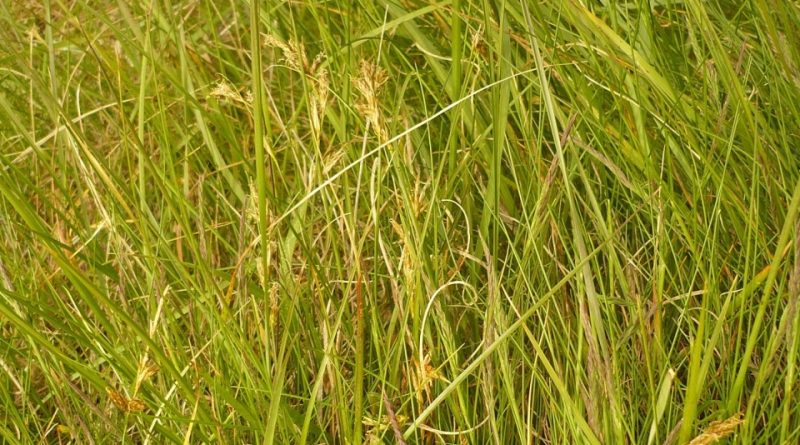Carex repens
Carex repens
The creeping sedge (Carex repens Bellardi) is a perennial herbaceous species belonging to the Cyperaceae family.
Systematic –
From a systematic point of view, it belongs to the Eukaryota Domain, Plantae Kingdom, Magnoliophyta Division, Liliopsida Class, Cyperales Order, Cyperaceae Family and therefore to the Genus Carex and the Species C. repens.
The term is synonymous:
– Carex arenaria Auct. not L ..
The following names are obsolete:
– Carex posnaniensis Sprib .;
– Vignea acroandra Schur;
– Carex disticha gracilis Boeckeler;
– Carex ligerica umbrosa Sprib .;
– Carex acroandra Schur;
– Vignea repens Rchb. (Bellardi);
– Carex arenaria repens Wahlenb. (Bellardi);
– Carex disticha repens Asch. (Bellardi);
– Carex arenaria posnaniensis Asch. & Graebn. (Sprib.);
– Carex arenaria umbrosa Sprib. (Sprib.).
Etymology –
The term Carex comes from the classical Latin name cārex, caricis carice (in Virgil), derived from the Greek κείρω keíro io cut, reference to the cutting edge of many species of this genus.
The specific epithet repens is the participle of répo crawl: creeping.
Geographical Distribution and Habitat –
The creeping sedge is a species, once present on a large part of the territory of northern Italy and today only present on some portions of Piedmont and the Aosta Valley.
Its habitat is that of the dunes or alluvial and sandy places where it grows thanks to the presence of long stolons under the soil surface. Its altitude distribution ranges from 200 m. at 1,500 m. s.l.m ..
Description –
Carex repens is a perennial herb plant that reaches a height of 20 to 50 cm.
It is characterized by a long stole with a rhizome of 2 to 3 cm in diameter and with a rough stem and straight leaves.
The front of the leaves has green veins and these reach a width of 2 to 4 mm.
The plant generates an inflorescence occupied by spikelets, both male and female. However, the distribution of sex in flowers can vary.
The stem is leafy at the base and the reddish, thick ovoid inflorescence, fairly compact, with male and female flowers with 2 stigmas; distinctly winged utriculi, long peduncle.
The antesis goes from May to June.
Cultivation –
The creeping sedge is a spontaneous species in decline on many areas that finds its suitable habitat in the dunes of plains or slopes, also in the vicinity of pine forests and on alluvial and sandy soils where it grows in an altitude range between 200 and 1,500 m. s.l.m ..
Uses and Traditions –
The quotes on this plant, as regards its pharmaceutical applications, are very old and not confirmed by recent essays on herbaria.
Of this plant rhizomes are used but there is not sufficient and exhaustive literature on its effects and benefits.
Method of Preparation –
The rhizomes of this plant are used.
Guido Bissanti
Sources
– Acta Plantarum – Flora of the Italian Regions.
– Wikipedia, the free encyclopedia.
– Treben M., 2000. Health from the Lord’s Pharmacy, Tips and experiences with medicinal herbs, Ennsthaler Editore
– Pignatti S., 1982. Flora of Italy, Edagricole, Bologna.
– Conti F., Abbate G., Alessandrini A., Blasi C. (edited by), 2005. An annotated checklist of the Italian vascular flora, Palombi Editore.
Warning: Pharmaceutical applications and alimurgical uses are indicated for information purposes only, they do not in any way represent a medical prescription; therefore, no responsibility is accepted for their use for healing, aesthetic or food purposes.


